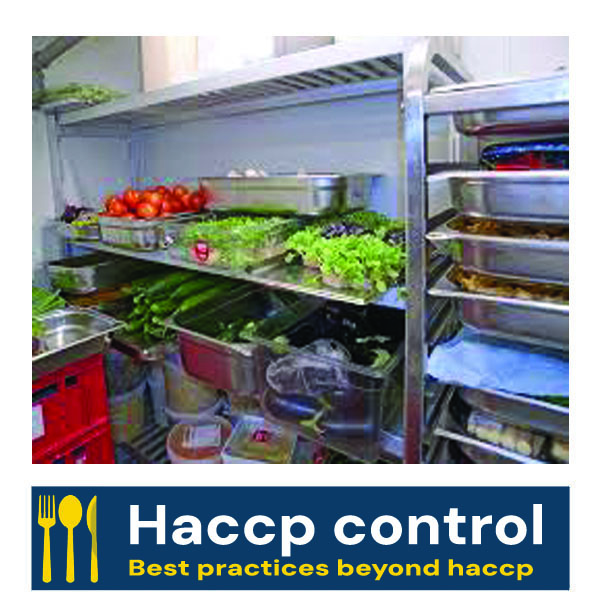“Understanding Date labelling - Primary and secondary”
In the context of HACCP (Hazard Analysis Critical Control Point), date labelling plays an essential role in managing food safety risks. While HACCP is a broader system that encompasses all aspects of food safety management, specific practices like date labelling are integral parts of ensuring that food products are handled and consumed safely. Here’s how date labelling fits within HACCP protocols:
Role of Date Labelling in HACCP:
Critical Control Points (CCPs): Receiving and Storage: Date labels on ingredients and products must be checked upon receipt to ensure they are within their safety and quality limits. This is crucial for perishable items where a ‘use by’ date might indicate a food safety risk.
Rotation and Usage: Using a “First-In, First-Out” (FIFO) system based on date labels helps prevent older products from staying in storage too long, which could lead to spoilage and potential health hazards.
Monitoring: Date labels are monitored at various stages of the food handling process. For instance, during inventory checks, products nearing their ‘best before’ or ‘use by’ date should be identified and either used promptly or removed from the inventory to prevent any food safety issues.
Verification: Regular audits and inspections should include verification that date labeling practices are followed correctly, that staff are trained in how to manage products according to their date labels, and that no expired products are present in the storage or service areas.
Record Keeping: Maintaining records of product delivery dates, batch numbers, and expiration dates is part of HACCP documentation. These records are crucial for traceability in the event of a food safety issue and for verifying compliance with food safety protocols.
Corrective Actions: Should a product be found that has surpassed its ‘use by’ date, the HACCP plan should outline clear corrective actions to mitigate any risk posed by the product, such as removing the product from the inventory and ensuring it is not served to customers.
Implementation:
For effective implementation of date labelling within a HACCP plan, a business should:
Train Staff: Ensure that all personnel involved in receiving, storing, handling, and serving food are trained on the importance of date labels and know how to take appropriate actions based on the information those labels provide.
Establish Clear Procedures: Develop and document procedures that outline how to handle products at different stages of their shelf life.
Use Supporting Tools: Implement tools such as coloured labels, clear signage in storage areas, and regular inventory checks to support effective date management.
Importance of Secondary Date Labelling:
Primary Date Labelling: This usually refers to the “use by” or “best before” dates provided by the manufacturer, which apply to unopened products.
Secondary Date Labelling: Once a product is opened, its shelf life can alter significantly due to exposure to air, moisture, and potential contaminants. Secondary dating helps manage this new shelf life to ensure food safety and quality.
Establishing Secondary Shelf Lives: Research and Guidance: Refer to manufacturer guidelines, food safety databases, or consult with food safety experts to determine how long different types of products are safe to use after opening.
Documentation: Document these guidelines in your HACCP plan and ensure they are easily accessible to all staff members.
Labelling Practices. As soon as a product is opened, a secondary date label should be applied. This label should clearly indicate the date the product was opened and the new “use by” or “best before” date based on your established guidelines.
Visibility and Clarity: Ensure labels are clear and visible. Use waterproof labels and markers if necessary to withstand conditions in refrigerators or freezers.
Training Staff: Train your staff on the importance of secondary date labelling, including how to calculate secondary shelf lives and apply labels correctly. Emphasize the role of this practice in preventing foodborne illnesses.
Monitoring and Compliance: Regular Checks: Incorporate checks into daily or weekly routines to ensure that all opened products are correctly labelled and that outdated products are discarded.
Audit and Review: Regularly review and audit secondary date labelling practices to ensure compliance and address any issues promptly.
Corrective Actions:
Define clear corrective actions in your HACCP plan for instances where products are found without secondary date labels or beyond their secondary use date. These actions might include discarding the product, retraining staff, or revising procedures.
General Guidelines and Legal Frameworks European Union (EU) and Ireland:
Within the EU, including Ireland, the overarching requirement is that food must not be harmful to health or unfit for consumption. While EU regulations mandate primary date labelling (“best before” and “use by” dates), they do not specifically require secondary date labelling once a package is opened.
Conclusion from DINEWISE:
Best practices are crucial as they go beyond minimum legal standards to further enhance food safety, improve quality, and reduce risks.
IF IN DOUBT – THROW IT OUT
“The Smiles That Keep Them Coming Back”
Winning Hearts, One Plate at a Time











